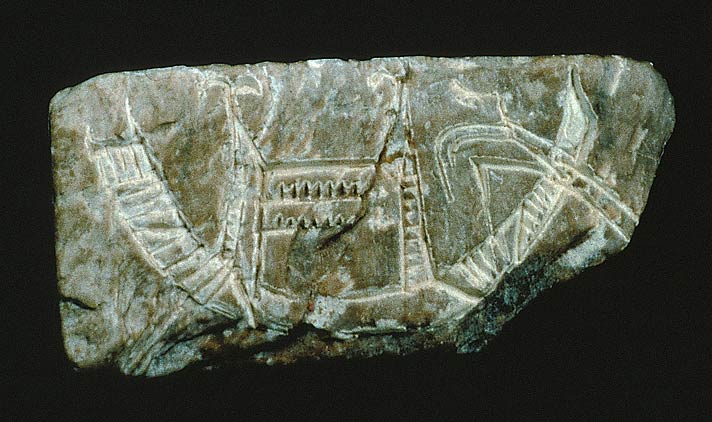
Unfired steatite seal with a flat-bottomed boat, Mohenjo-daro.
The people of the Indus valley seem to have exported many more goods than they seem to have imported. Moreover, imported items like silver (found mainly in Harappa and Mohenjodaro) did not seem to have been distributed beyond the main cities suggesting that there was little demand for the goods in the smaller centres. Does this suggest that, if, as has been suggested, the Indus people took the initiative for the trade, this was a centralised effort that profited only the cities? Submitted by Apoorva Bhandari
Jane McIntosh
I would think that the elite and urban dwellers inevitably obtained a higher proportion of imported goods than the villagers, and silver may have reached only the urban elite. However, given that many quality materials and goods were well distributed throughout Indus society, I think it likely that villagers also received a share of imports in general. If, as I believe, woollen textiles were a major part of the Mesopotamian goods and materials that the Harappans imported, I would expect these to have been widely distributed.
